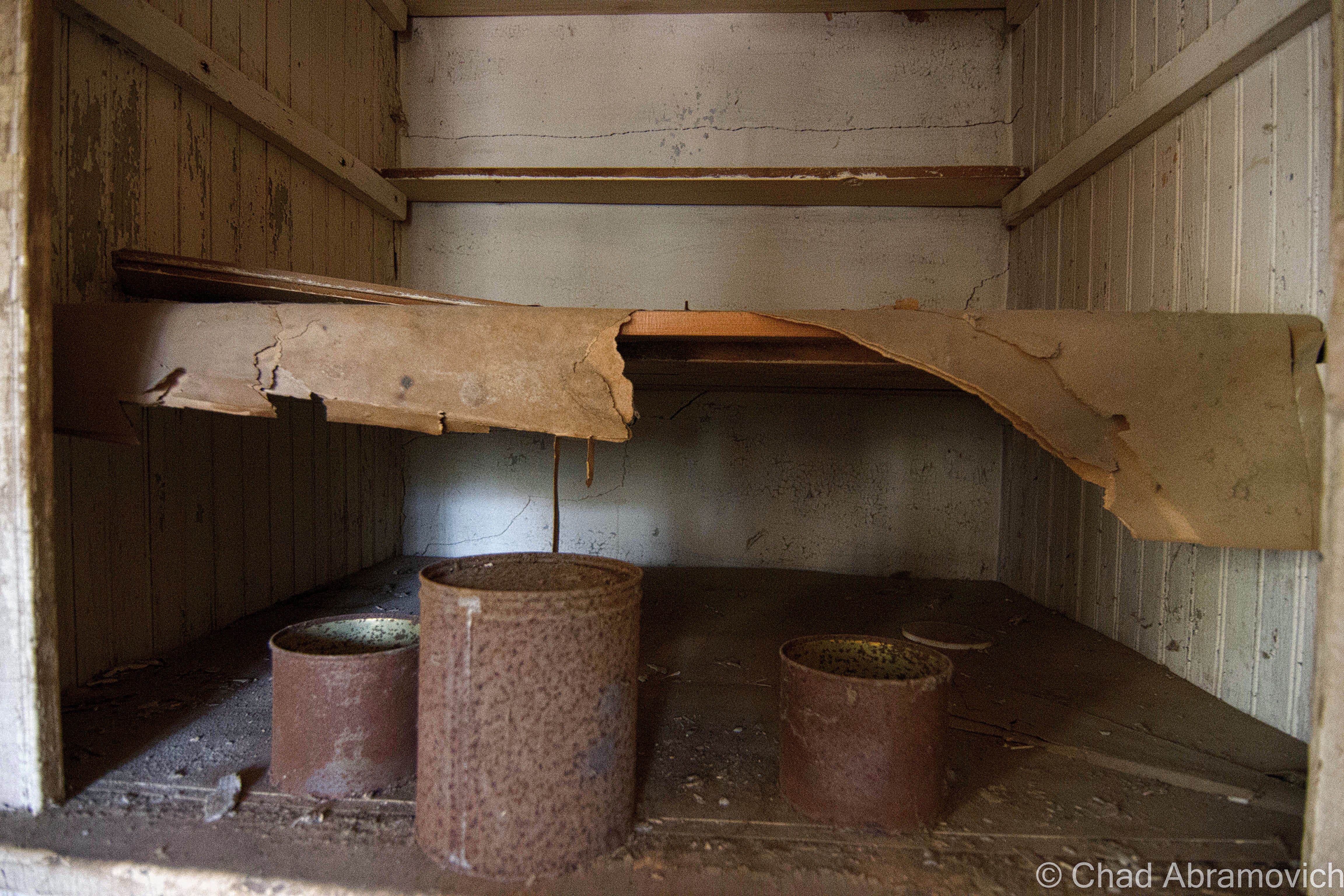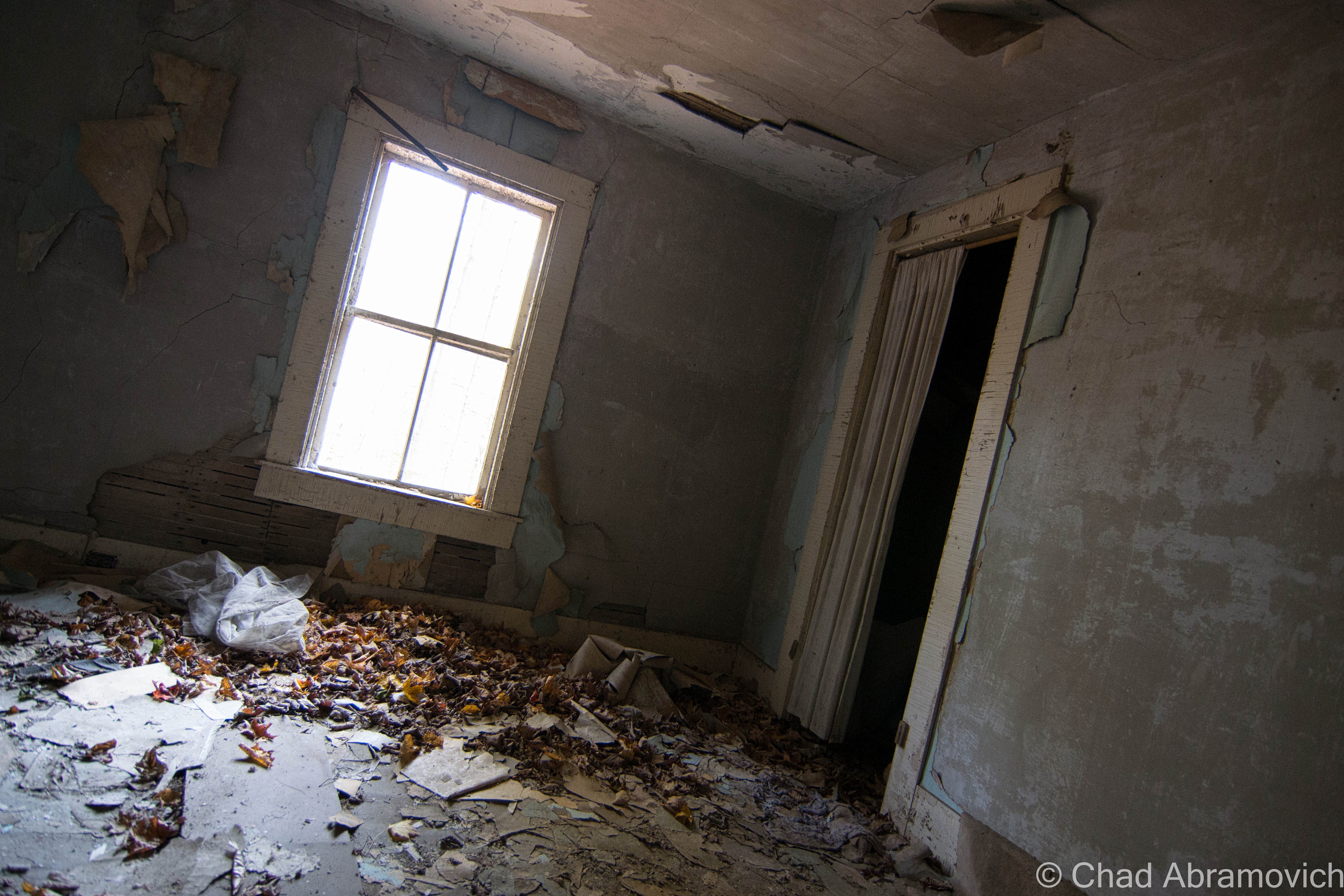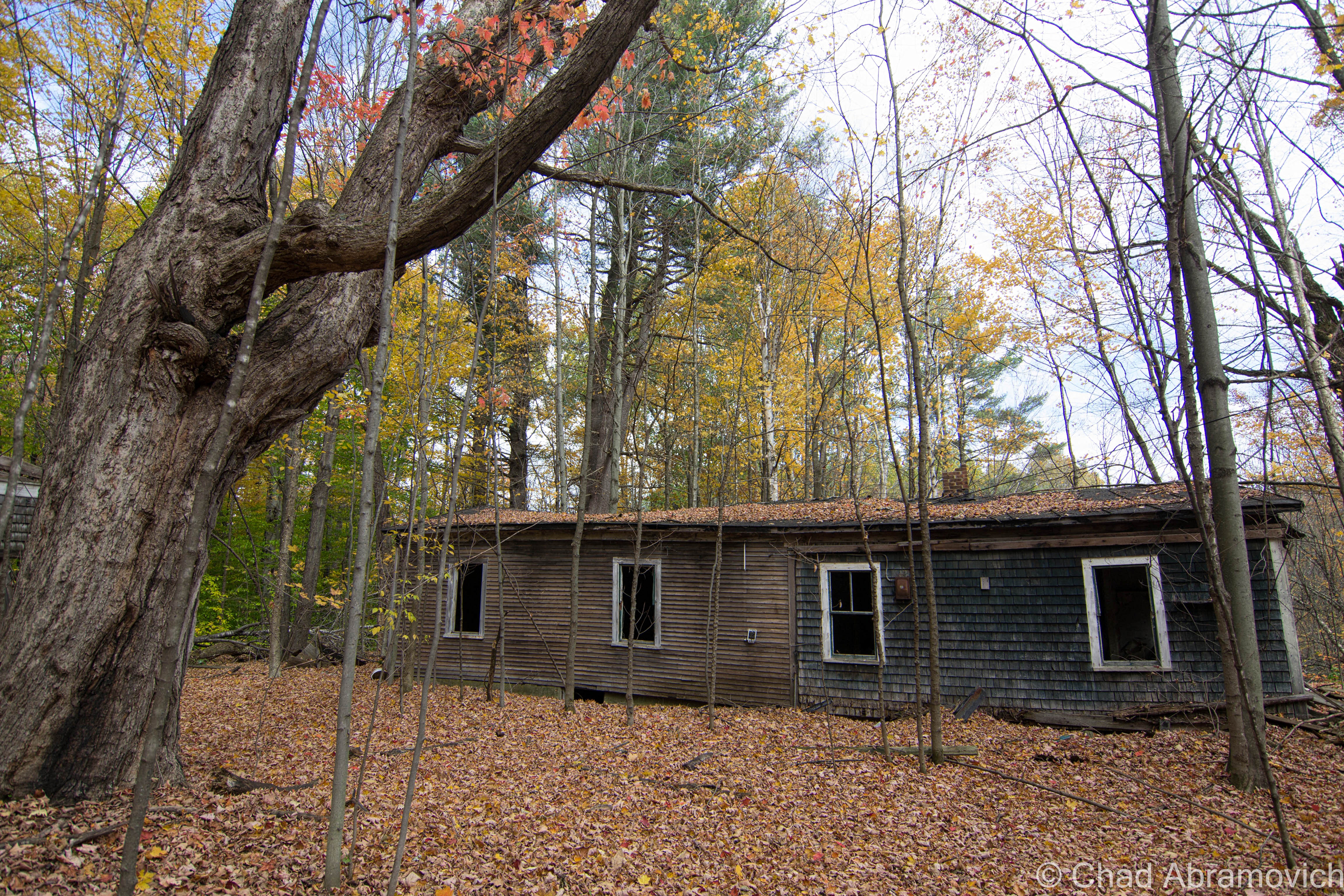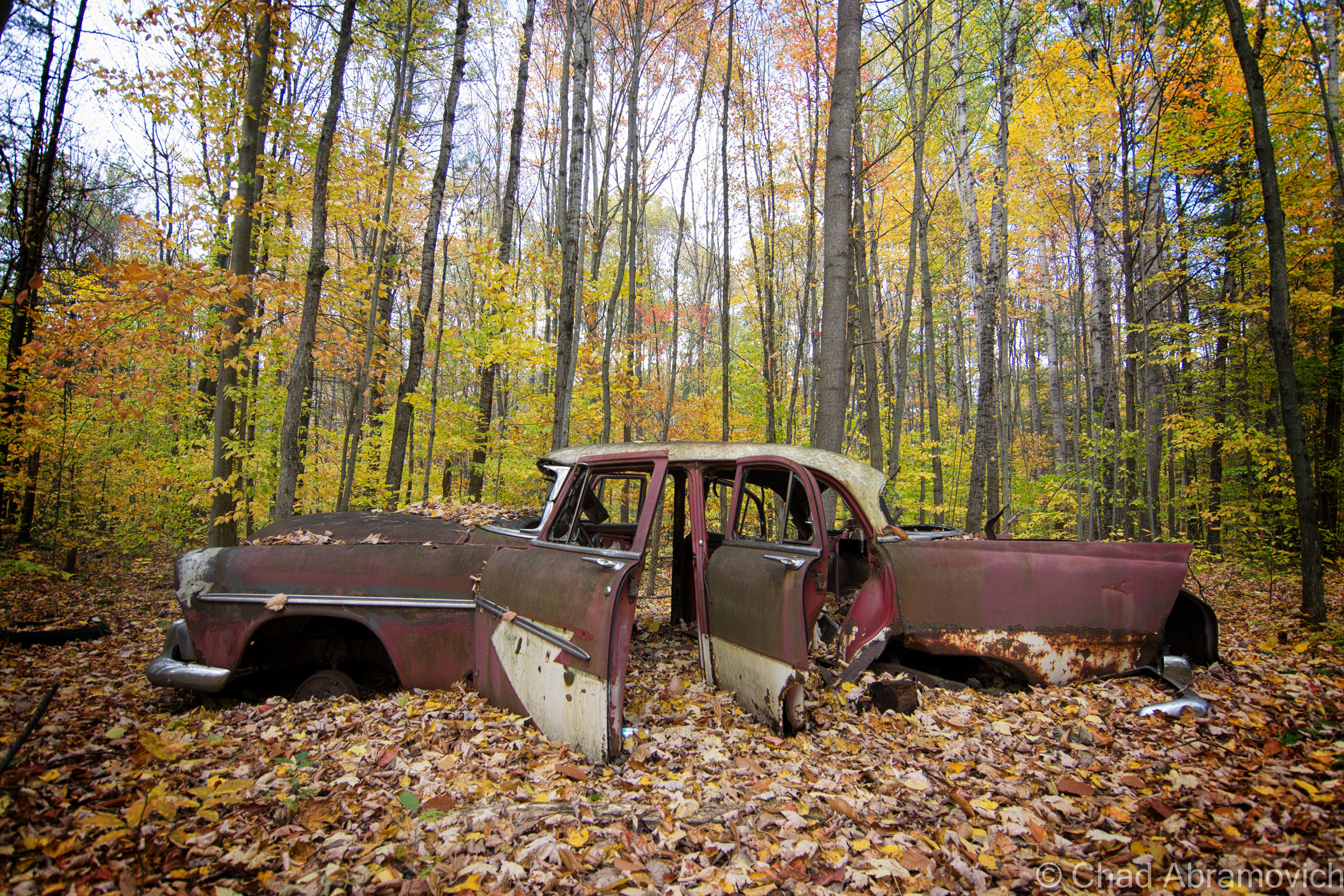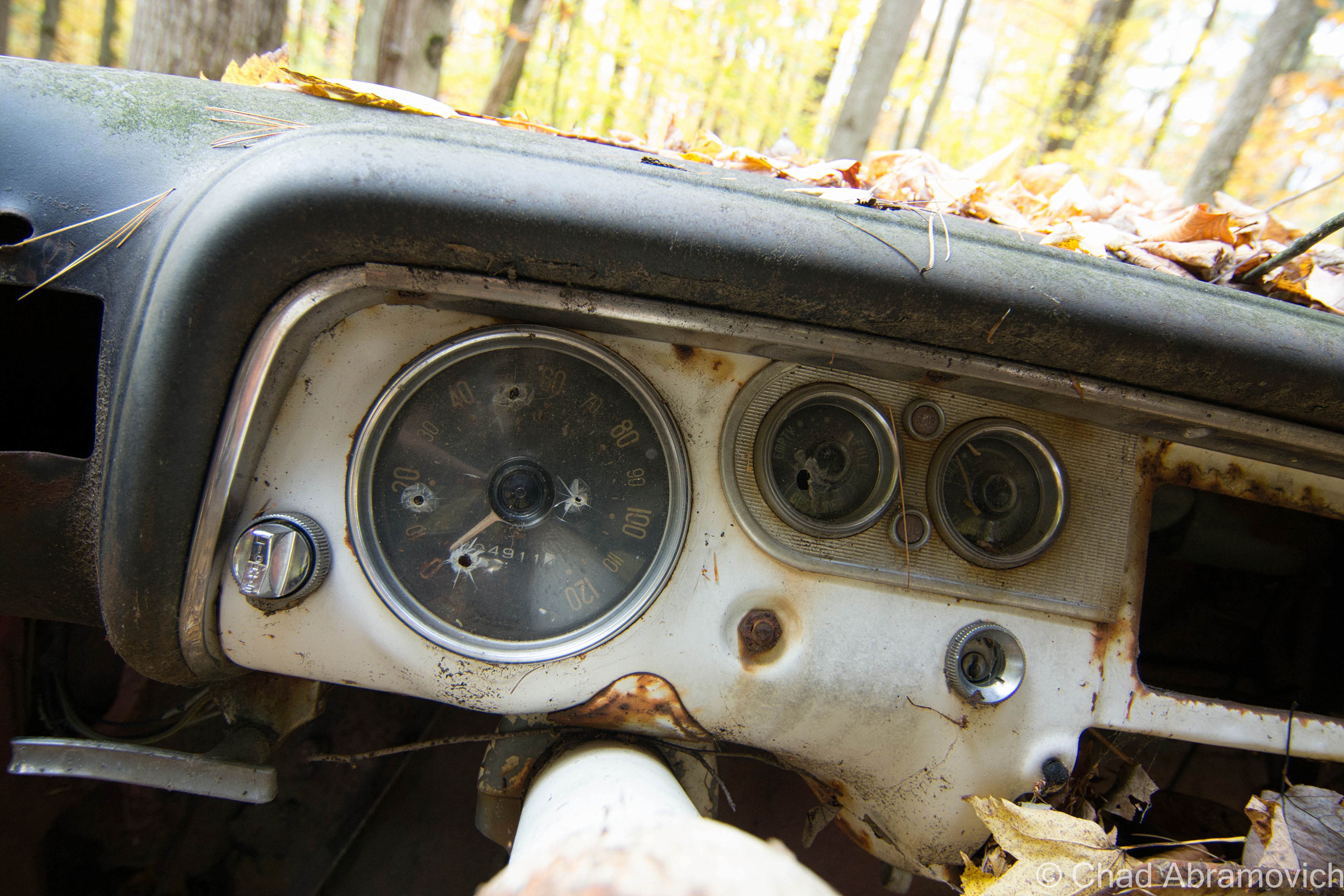For years now, I’ve heard talk of adventures in the caves and abandoned quarries of Southern Vermont, which compelled me to research them. The town of Dorset, northwest-ish of Manchester, has a remarkable 31 abandoned quarries within the town limits, and a drive through town offers some perspective here.
Dorset is mostly mountainous because it’s where the Green Mountains and the Taconics collide – separated barely by a narrow valley called “The Valley of Vermont”, which the famous U.S. Route 7 passes through.
Mt. Aeolus, Owls Head, Netop, and Dorset Peak are a clump of Taconics that formidably fill up most of the western part of town. It’s here where the geography offered profitable geology; marble.
The oldest commercial marble quarry in the United States was carved into Dorset bedrock in 1785 in the village of South Dorset, along today’s Route 30. Over the next 130 years, about 30 more quarries would pit up the slopes of Mt. Aeolus and Dorset Peak. The marble expelled here was of such a fine quality, with attractive tints of greens and blues, that the demands multiplied and Dorset marble soon found notoriety in several significant buildings in major cities across the United States, such as New York and Washington DC.
One of the quarrying operations accomplished here was the awesome Freedley Quarry, located 1,000 feet up on the eastern slopes of Mount Aeolus. The John K. and William G. Freedley Company of Philadelphia started quarrying on the slopes and would initiate other quarries from there.
Freedley got its start in 1875, and was unique, because it serpentined horizontally into the mountain, creating an unusual cave within the superstructure.
It was so high up that a unique gravity railroad was built, and ran down the side of Mount Aeolus, delivering marble to the cutting and finishing sheds in the valley below, next to the Bennington and Rutland railroad tracks. A little village of quarry workers was set up around the sheds called Freedleyville, and is now a ghost town. Like much of Vermont cartography of yore, the village is sometimes still labeled on maps, even though the only evidence of the place are skeletons of thick walls in the woods near Emerald Lake that are the ruins of the old marble sheds.
But by the 1920s, the marble business went bust, largely because of the introduction of Portland cement, which became a cheaper and more convenient replacement. Most of the quarries in Dorset would be bought up by The Vermont Marble Company in Proctor, who then shut them down to consolidate business as demands continued to drop.
In the 1930s the ski craze hit southern Vermont, which would coax the area’s shift into tourism. For a brief time, Fred Pabst of PBR fame developed a J-Bar served ski area on the slopes of Mt. Aeolus, but not long afterward, he decided to pull the lift and move it to Bromley. In the 60s, a larger proposed ski resort conceptualized as Dorset Hollow was proposed, but was killed shortly after it’s birth from tumultuous local opposition. If the resort had been built on Netop Mountain, it would have offered a 3,000-foot vertical drop which would have made it the largest of any ski resort in Eastern North America. The mountains were left to be reclaimed by nature, but the marble industry has left a lasting impression here in a tangible way. One of those being the distinctive marble sidewalks that still parallel along Route 30 in Dorset village and are slippery when rainy.
Today, the assortment of quarries are popular with the outdoor adventurous type. A few locales and their sharp vertical walls draw cliff jumpers, some who like making edits of their leaps. The Norcross Quarry on Route 30 is a popular place to taunt trauma.
The mountains around Dorset Peak are unassumingly steep backcountry, which is combed with an expansive network of celebrated 4 wheeler trails and logging roads that draw off-roaders in Jeeps, trucks, and ATVs for a radius so large that many of the battered vehicles have out of state plates. Somewhere in those woods is a set of trails which are apparently so gnarly that some locals have dubbed them “World War 3”.
But as I was finding out, people in the know about such places don’t like to give up their locations, for the same reason that I often don’t disclose the places I explore; protection. These personal sanctums are in constant danger of being ruined by disrespectful patrons or being closed down due to potential injuries making them a jeopardy to public safety or a liability to the property owner. It’s one of those double-edged swords which I can sympathize with and be bummed by at the same time. Any invitation I receive is always met with me profusely expressing my gratitude.
Taking to the resourceful world of the internet, I discovered The Vermont Cavers Association and got a background on another intrepid hobby in the Green Mountain State; caving. Even though Vermont isn’t all that known for its caves, there are plenty of people here who seek them out all the same. The state’s geology doesn’t allow for the water permeation and underground flows that form the massive caves found farther south in Appalachia.
Author and caving expert Peter Quick noted that Vermont may have around 60 caves that would stretch beyond 100 feet. But we still have a pretty impressive network here that is ardently admired (The quarries in Dorset are included on that list), with many new ones being discovered yearly. Some subterranean passages are described as squirming through twisting spaces the size of your body, which is a deal breaker for me. I’ll take my adventures free of claustrophobia, above ground.
On a humid early summer’s morning, I took the scenic drive down to mountainous Southern Vermont to see if I could find some of these well-esteemed quarries. After driving through Victorian Wallingford, Route 7 south became linear straight, running between the Green and Taconic Ranges which closed in the highway on both sides. Part of this expanse of wilderness is within the easily missed town of Mount Tabor, which Wikipedia condemningly says is “the sneakiest speed trap in the United States” and something about dead bodies occasionally being found along Route 7. That submission may or may not be the work of a disgruntled internet user. I can’t deny or confirm the corpse claim.

I stopped by the Dorset Historical Society to speak with museum curator Jon Mathewson, an amiable and interesting gentleman, who helped point me in the direction of achieving my goal of getting up to a quarry. Inside the museum is a rather cool 3D map of Dorset, with all of the defunct quarries marked on the raised surfaces and information corresponding to each, some having amusing connotations like “Deaf Joe Quarry”. He directed me to the aforementioned Freedley Quarry, and told me where to find the class D roadway that would take me there.
Freedley Quarry, First Attempt.
The Freedley Quarry is easy to get to, as long as you don’t make the same mistake I did and accidentally hike up the wrong mountain, turn around and descend back down the mountain while breathing heavily, soaked in sweat and suddenly no longer caring if you found it or not.
On my first attempt, I had brought my buddy John along for the adventure. Parking in front of the aforementioned road, which in reality was only a really muddy 4 wheeler trail, we entered the woods. Not remembering if I was supposed to take a left or a right at the first fork in the trail, we took a left. What I had assumed would have been a 20-minute walk in the woods turned into a laborious climb up Mt. Aeolus while making the futile effort of swatting at endless clouds of dive-bombing mosquitoes and wondering if I was going in the right direction. I now understood why a railroad was built up here over a century ago.
The forests suddenly opened up due to a massive rock slide created by quarrying efforts that vanquished a huge patch of the mountainside as they tumbled. The clearing offered impressive views of Emerald Lake gripped by the narrow valley of Vermont, and beyond, the Green Mountains. Directly adjacent to the clearing, I found the Folsom Quarry. Folsom was semi-interesting, really just a cavity in the upper slopes of Mt. Aeolus, it’s visage bearing the scars from years of cutting, now left to the caprices of nature. But, it had some amusing points of interest. One of them being that Folsom was so high up in elevation (over 1,000 feet), that it never floods. The second was that its tall vertical walls gave it the traits of a natural amphitheater. It was cool, both metaphorically, and literally, as it offered relief from late June humidity, but it wasn’t the impressive catacomb-like quarry I was so interested in seeing.
Onward we trudged, as the trail zig-zagged up the mountain in a series of deeply rutted switchbacks. Eventually, I came across a startling find. A surveillance camera far from anything, powered by a lone solar panel, both attached to a wooden post. Nearby were some yellow diamond Nature Conservatory signs, announcing that I was now near the Aeolus Cave, and asking us to please keep away as part of an effort to combat the mysterious illness, White Nose Syndrome.
I had remembered Jon telling me about the Aelous Cave and White Nose syndrome, which was first discovered in Upstate New York in 2007 and made it’s debut in Dorset around 2008, as hikers and cavers began noticing the grisly site of scores of dead bats carpeting the floors of the mountaintop cave. The pre-White Nose Syndrome Aelous Cave was the largest hibernaculum in the northeastern United States, but the fungus wiped out about 90 percent of its resident bat population. Today, the Nature Conservatory has designated the cave as a both a protected and research designated area.
Seeing this, I knew I had gone way too far. Descending back down the mountain, I decided that a few pizza slices accompanied by an IPA in Manchester was more appealing than trying the other fork in the trail. I was exhausted.
Freedley Quarry, Second Attempt
The rain had just come to a dull drizzle by the time we arrived back in Dorset. Somewhere under the fog was the mountain that we were going to hike, and carved into that mountain, the quarry. Parking at the now familiar trail head, me and my friend Eric embarked into the woods and damp mists. The trail split into a fork, and we took the right, hoping that this time, we were on the right path. But another ten minutes into our trek up the washed out trail, we came upon yet another fork. I mentally groaned. Then I audibly groaned. How many trails were there on this mountain? Once again, the directions I had been given weren’t directions, and I had no idea what to do or had any sense of bearings.
That old saying “you can’t see the forest (or in this case, quarry) through the trees” was a very relevant concept at this moment. Any of these paths could potentially have lead to there. The trail actually had at least three unaccounted forks, and we hesitantly detoured on all of them, each contributing unenjoyable climbs up steep inclines serviced by trails reincarnated as mudslides due to the relentless succession of rainstorms that had recently drenched Southern Vermont.
As we traveled deeper into the woods and past other defunct quarries that had long silted in with dirt and vegetation, I began to notice a viscous mist that was conspicuous from the rain and fog, accompanied by the wafting acrid stench of sulfur and gunpowder. That was a familiar smell. Someone was lighting off fireworks, and they were near enough where the expelled smolder could reach us. We both assumed that there were other people at the quarry engaging in some festive intimacy, and mentally prepared ourselves to deal with them as we would attempt to photograph the place. The supposition that we weren’t alone on the mountain was confirmed when a few people passed us on the trail riding in Jeeps, some exchanging greetings by waving, and others by flicking cigarette butts at us. I suddenly felt awkwardly out of place, being the only folks on foot up here.
Soon, we came across the creepy dampened ruins of what appeared to be some sort of old shack or hunting camp or meth lab, which looks like it was the victim of a homemade firework and exploded at some point, interspersing twisted and disintegrating artifacts throughout the overgrown brush along the trail. Among the debris were a scattering of beer cans and food wrappers, which told us that even way up here, people come and party/litter.
Ahead, we noticed a four-way in the trail and could feel the air become a bit cooler, which was a good indication. To our left, the black mouth of the quarry soon became discernible through a thick strand of White Birches. The smoke was incredibly thick now, and as I slowed down to survey the area, I saw what I had expected to see; there was a rather large bonfire crackling where the cave met the open air.
We also noticed the producers of the fire; three slovenly people who appeared to be in their late teens, two boys and a girl, and all of them were wearing hunter orange. For some reason beyond my rational, this seemed to make me a bit uneasy. The weather on the mountain was viciously sultry, far too hot to be clad in full-body hunter orange. And why would you wear it in the summer when hunting season isn’t for another few months? We observed as the two fellows headed into the complete blackness of the cave, and the girl sat on what appeared to be a rock and plopped herself startlingly close to the fire.
At a complete standstill, I was about to ask Eric how he felt about approaching the cave and trying to take some photographs despite their presence there, but then came the pivotal point of our encounter. A strange sound came from the dark crevices from within the cave, what sounded like the wail of a goat. We waited in confused and uneasy silence. As our eyes strained for answers, we heard that terrible noise again, only this time, the situation became clear. It wasn’t a goat. Those guys were the ones making the noises.
We took a few steps backward now, a bit alarmed, and suddenly not wanting to be detected. The two guys, completely unperturbed, continued their strange ritual of making those horrible goat noises inside the cave, loudly reverberating and making empty echoes off the walls that sounded like something from a hellish nightmare. Later, Eric and I would both agree that what we had heard was the weirdest noise both of us have ever encountered. It sounded inhuman, and yet, we both knew it came from the mouth of one.
It was now when a new detail that I had overlooked before, came to light. None of them were talking to one another. Other than their contrived lunacy, none of them were actually speaking to one another, and wouldn’t for the entire time that we had stuck around. Then, all went silent, apart from the crackling of their fire.
One of them started to maniacally whistle, followed by a few minutes of uncomfortable silence, and then the other guy whistled back in the same manner. This pattern repeated for a few more minutes, followed by the ominous goat noises once again resuming. We waited there, obscured by thick brush and birch trees, for twenty minutes, partially because that the bizarre show that had been developing before us was somehow too tantalizing to walk away from.
Then, the girl, who was still crouching by the fire, started making an awful wailing noise, that sounded much like a baby that was in great distress, and this went on for several minutes as we gazed at them from our hiding place with intermittent glances at one another, completely befuddled. The goat noises started back up, and still, none of them were talking to one another.
My disappointment couldn’t be contained. We were so frustratingly close to our destination, and yet, the ghastly activity coming from the quarry ensured I didn’t dare make a move to get any closer. I was far too nervous at this point. A large quarry this secluded was a perfect place for multifarious clandestine activity. Sometimes, the motives of sentient beings can be vexing. We spoke in quiet whispers and made the decision to get the hell out of there. Just as we began to walk backward, the mountainsides vibrated violently and gray sulfurous smoke spewed through the trees. They were now lighting off some heavy-duty fireworks inside the cave.
Walking back down the trail, I couldn’t help thinking that we had somehow avoided some great danger, and a feeling of sweet relief crept over me. Not long after hastily retreating, we ran into two middle-aged looking guys traveling up the trail in a Jeep. We stepped aside to let them pass, but they smiled at us and stopped, and both parties exchanged greetings.
“What are you guys up too?” the gentleman behind the wheel opened with, his eyes falling on our cameras. “We wanted to check out the Freedley Quarry” I answered. “Oh yeah? What’d you guys think?” asked the man in the passenger seat. “Don’t know, we never made it”. Both of them looked at us quizzically, probably because we were walking from the direction that the quarry was in, so we told them what we had just encountered, and why we turned around.
The guy behind the wheel just looked at us like he was in a condescending state of awe, then said as a matter-of-factly; “well, it’s a free country”, and drove off.
In all the excitement, I had forgotten it was the fourth of July.
Freedley Quarry, Third Attempt
This time, it was my friend Jay that accompanied me, who found my previous failed attempts and strange encounter pretty amusing. Only this time, we made it to the quarry without any setbacks and spent three pleasant hours exploring its eye magnetic catacombs, flooded passages and exquisite shaft like opening that bore straight upwards through the roof of the mountainside we were underneath. Not surprisingly, the insides of the massive line diminishing space were colorfully graffitied on just about any available surface and were a mixture of the usual things you’d expect to see graffitied somewhere. Names and dates, slanderous accusations, original artwork and conjurings of the more vulgar variety. The quarry floors were littered with trash and strangely, nails, and rubbed black from numerous tire treads of all the vehicle activity inside the cave. In the winter, the flooded insides freeze over, and people snowmobile up the mountain and utilize the quarry as an awesome skating rink.
Eventually, we were losing daylight, and the quarry began to take on a more eerie pallor as the temperature dropped and the interior became a dark place haunted by the cacophony of dripping water. I’m glad I stayed persistent.














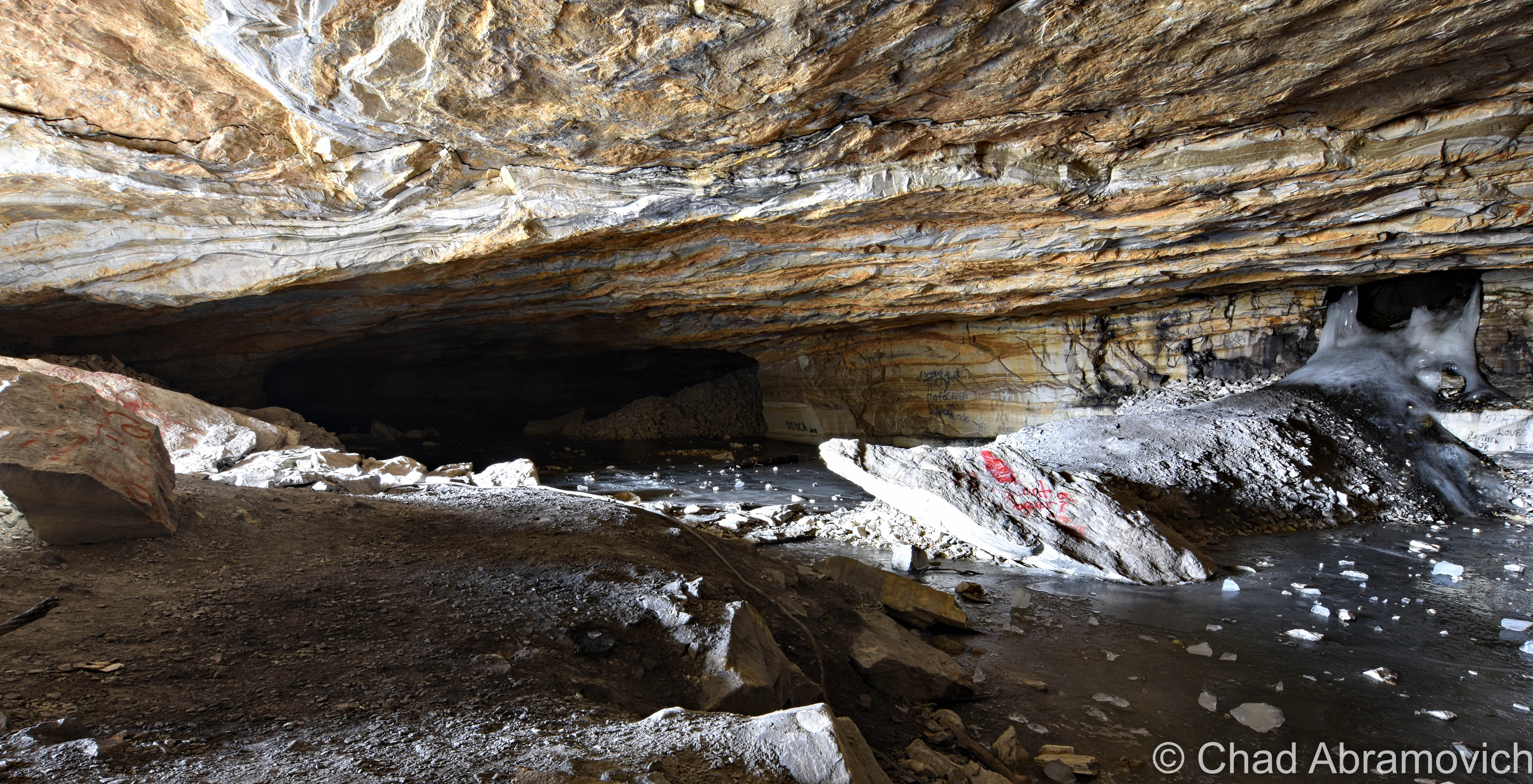


Freedleyville re-visit, Spring 2019
I love re-visiting, re-shooting, and introducing friends to fun places. This time, it was my friend Connor along for the Vermont-venture to seek out this amazing human-made wonder.
We huffed and puffed up the old logging road for a good 40 minutes as a damp fog curled around Taconic rambles. Though springs greens were appearing down in the valley, the season hadn’t sent its pulse up in the mountains. Everything was still stark and damp.
All the marble waste that occupies the forest floor increased in deposits and foreshadowed us getting closer.
And then – there it was! A humongous gaping maw that went into the mountain that was shrouded in mists and a biting chill that belched from within, and the dark interior was suddenly ominous and a cacophony of strange noises. We had a blast walking around and observing the natural marble, the graffiti left from other wanderers, and seeing where the various icy passages went. In the winters, and interior lagoon in the back tendrils of the cave freezes over and you can ice skate it or get a game of quarry ice hockey in.




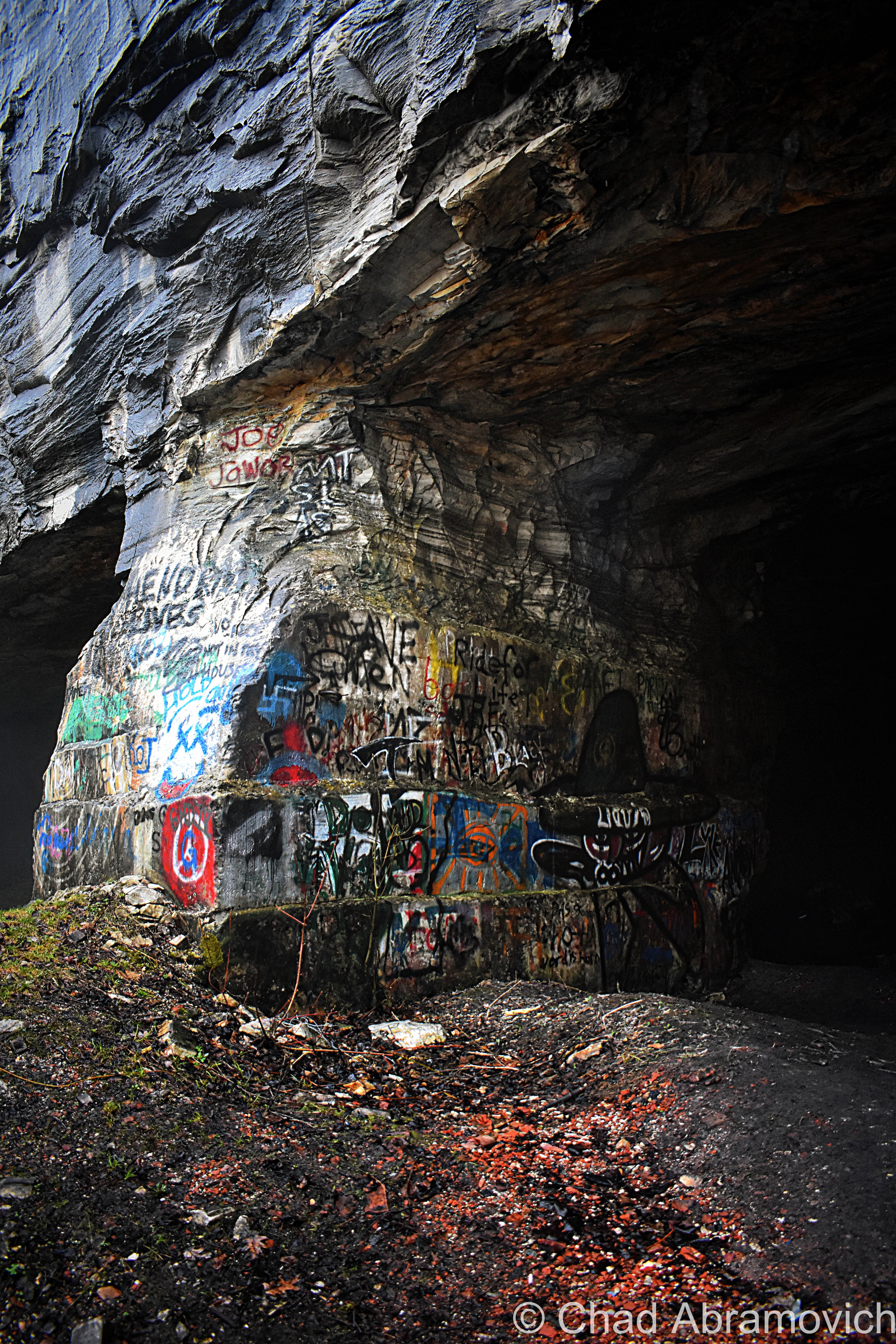




—————————————————————————————————————————————–
To all of my amazing fans and supporters, I am truly grateful and humbled by all of the support and donations throughout the years that have kept Obscure Vermont up and running.
As you all know I spend countless hours researching, writing, and traveling to produce and sustain this blog. Obscure Vermont is funded entirely on generous donations that you the wonderful viewers and supporters have made. Expenses range from internet fees to host the blog, to investing in research materials, to traveling expenses. Also, donations help keep me current with my photography gear, computer, and computer software so that I can deliver the best quality possible.
If you value, appreciate, and enjoy reading about my adventures please consider making a donation to my new Gofundme account or Paypal. Any donation would not only be greatly appreciated and help keep this blog going, it would also keep me doing what I love. Thank you!
Gofundme: https://www.gofundme.com/b5jp97d4












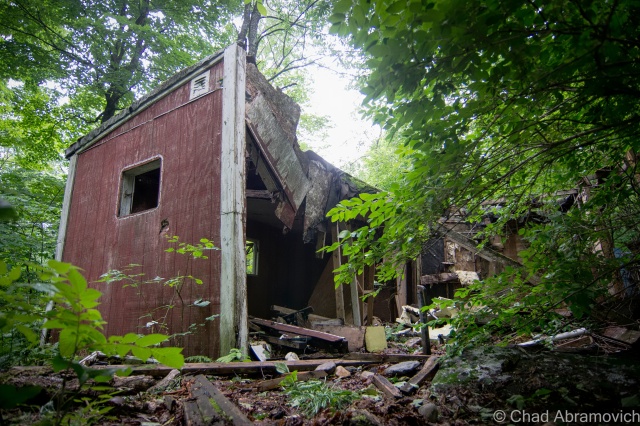

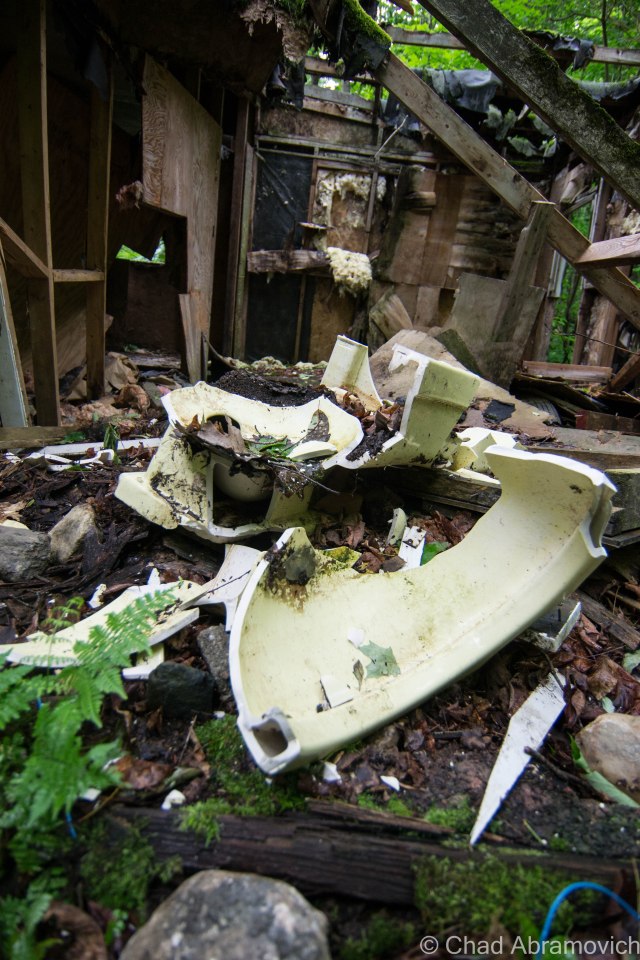


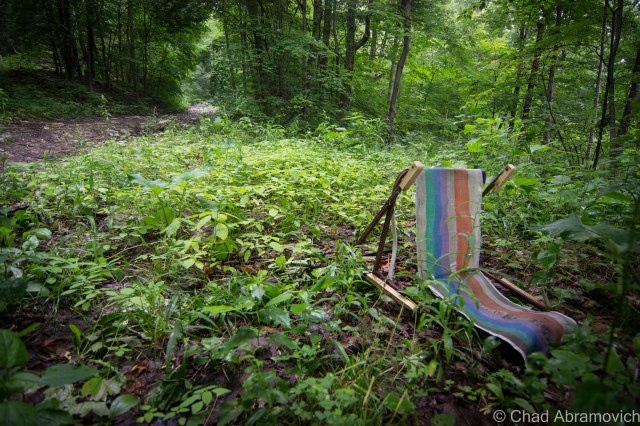







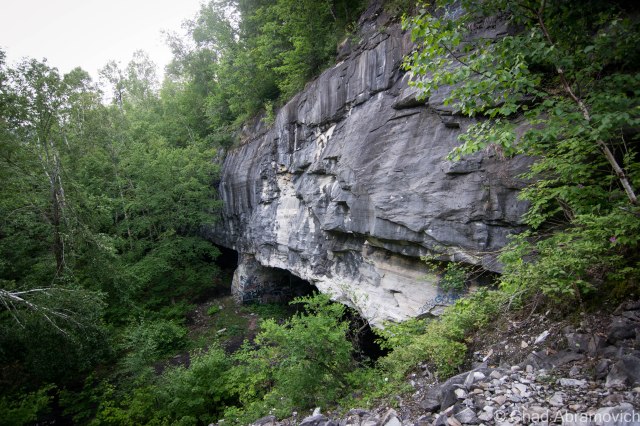












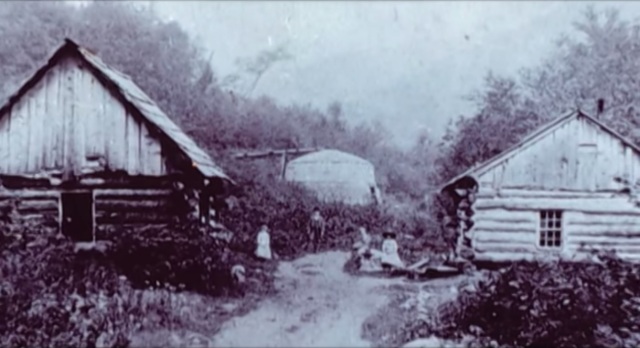









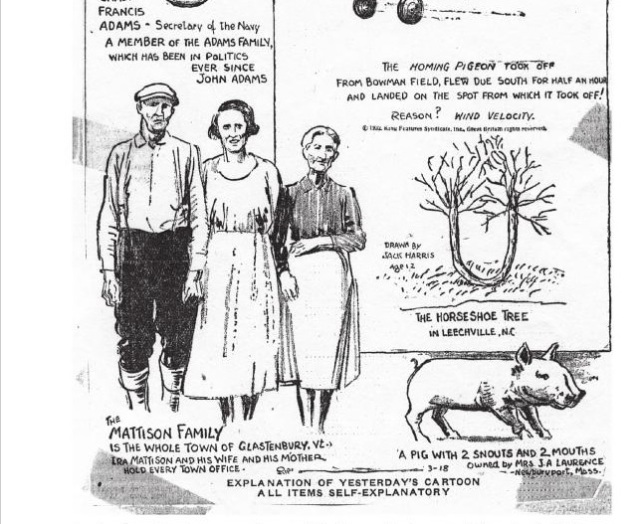






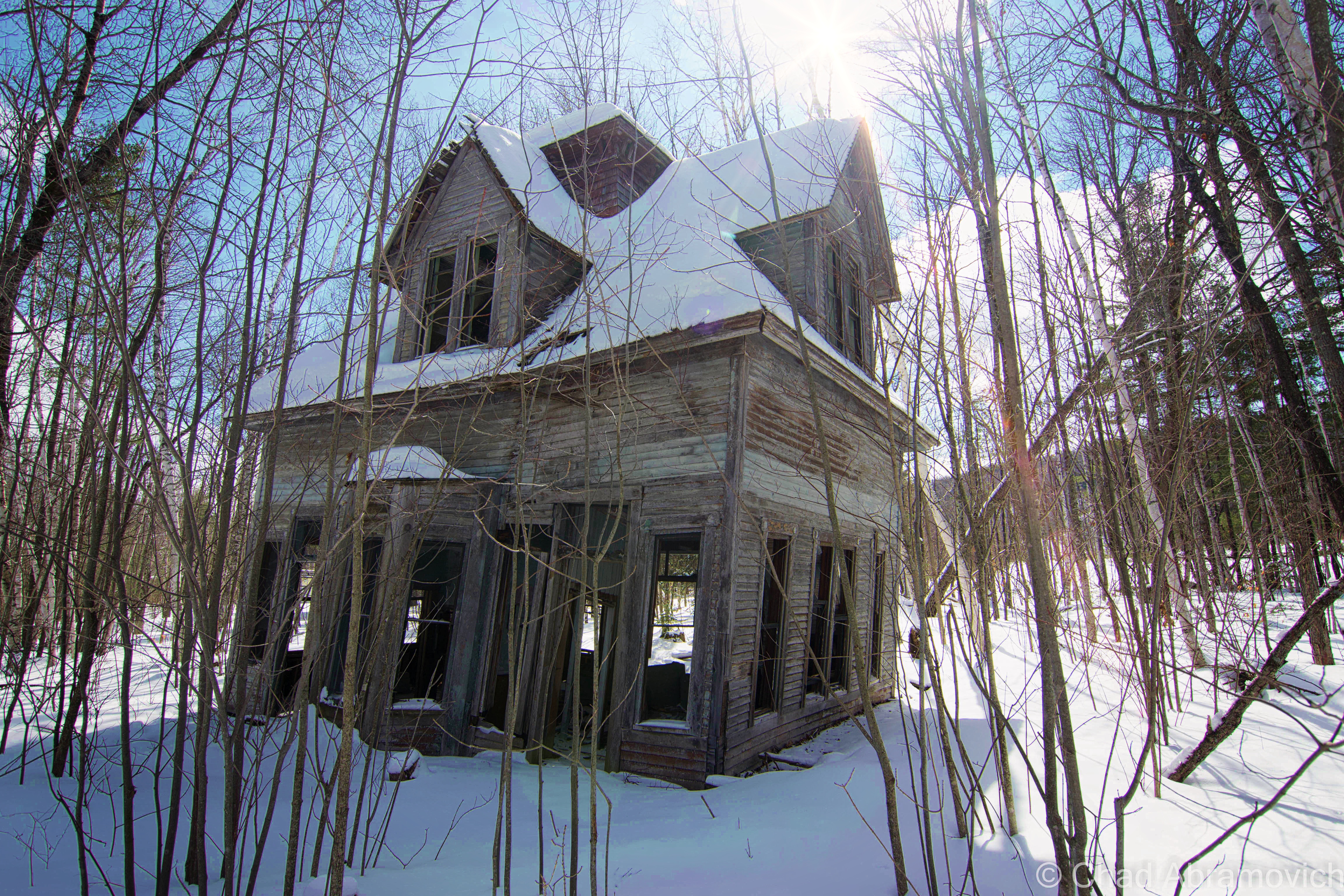



















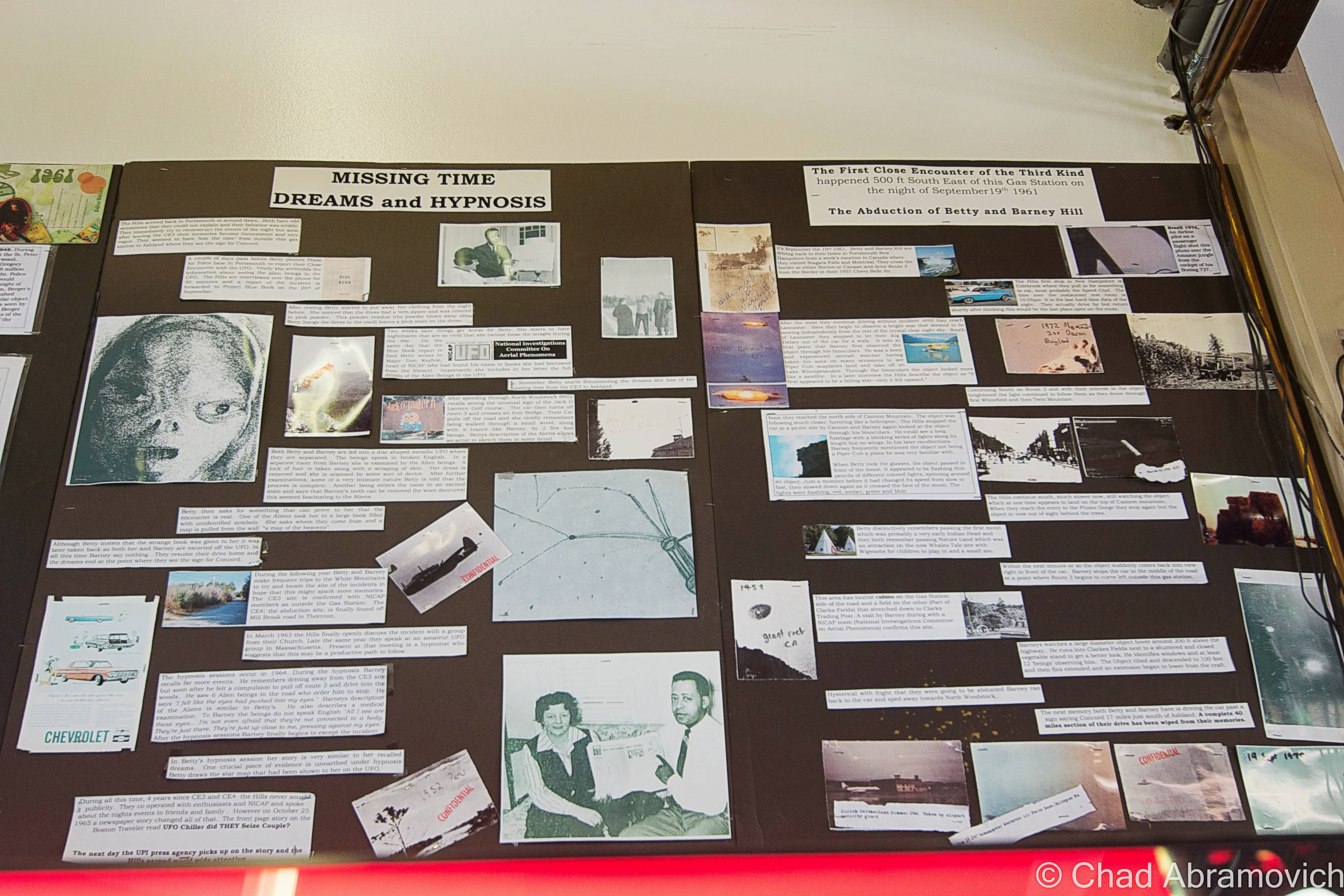





















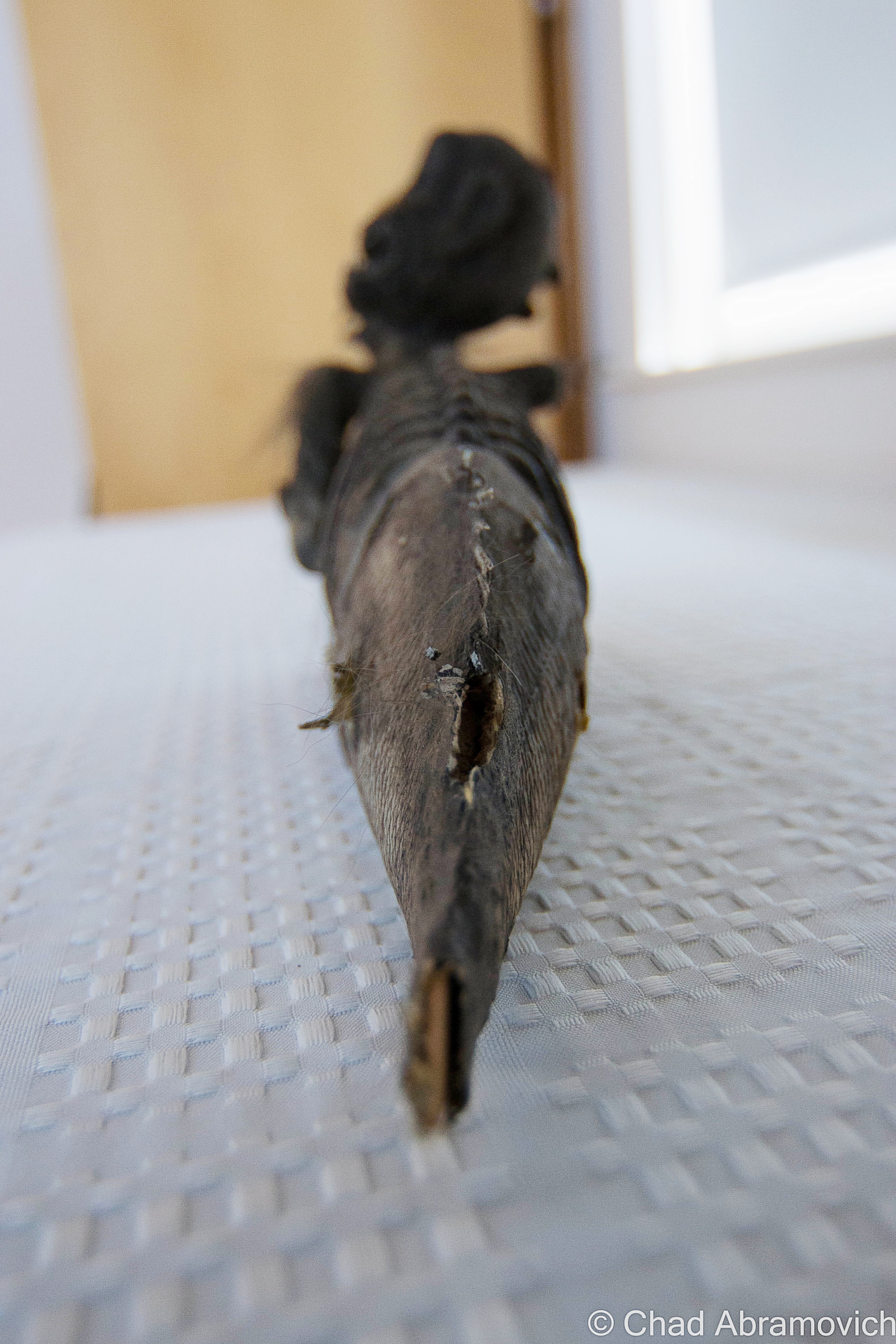










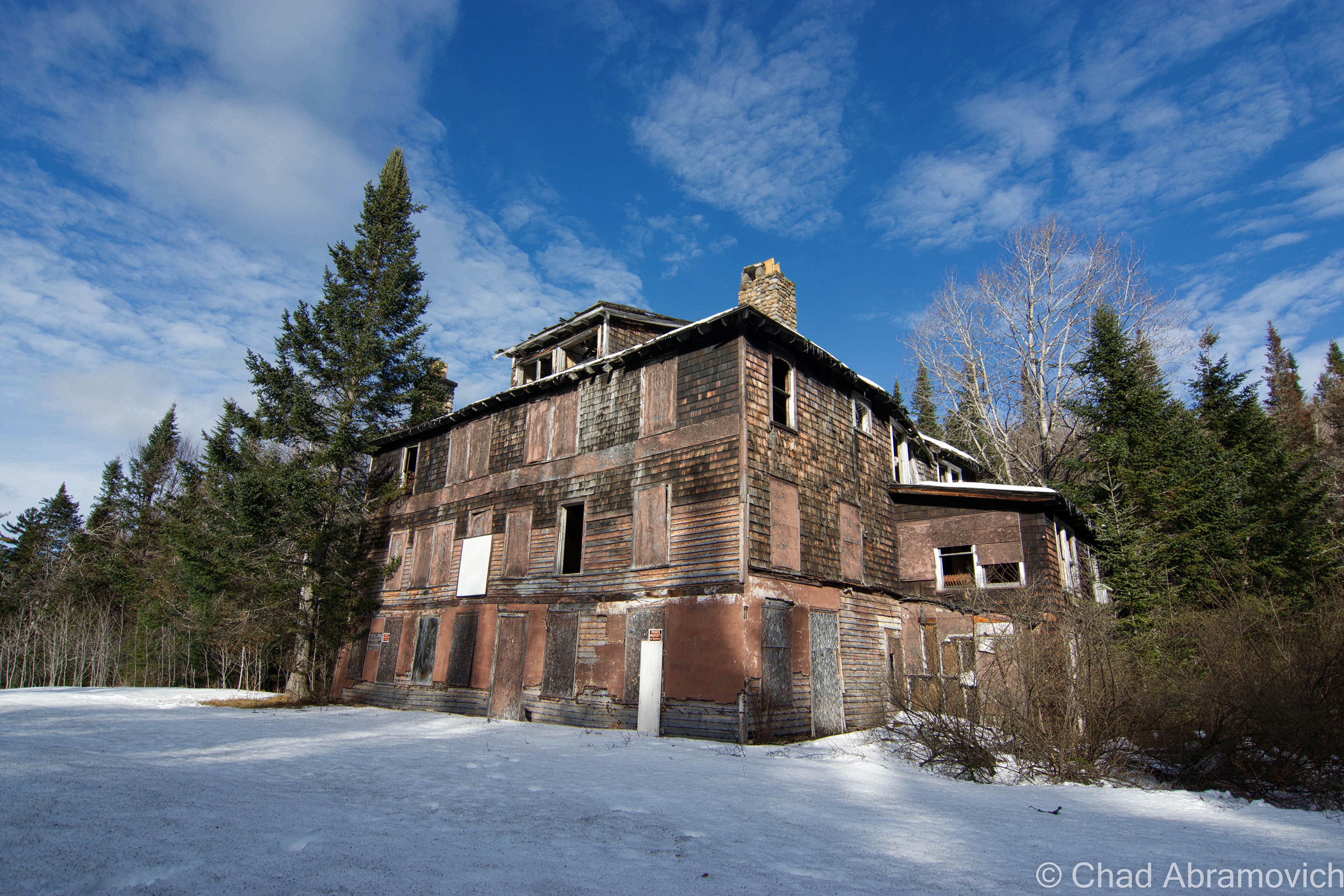








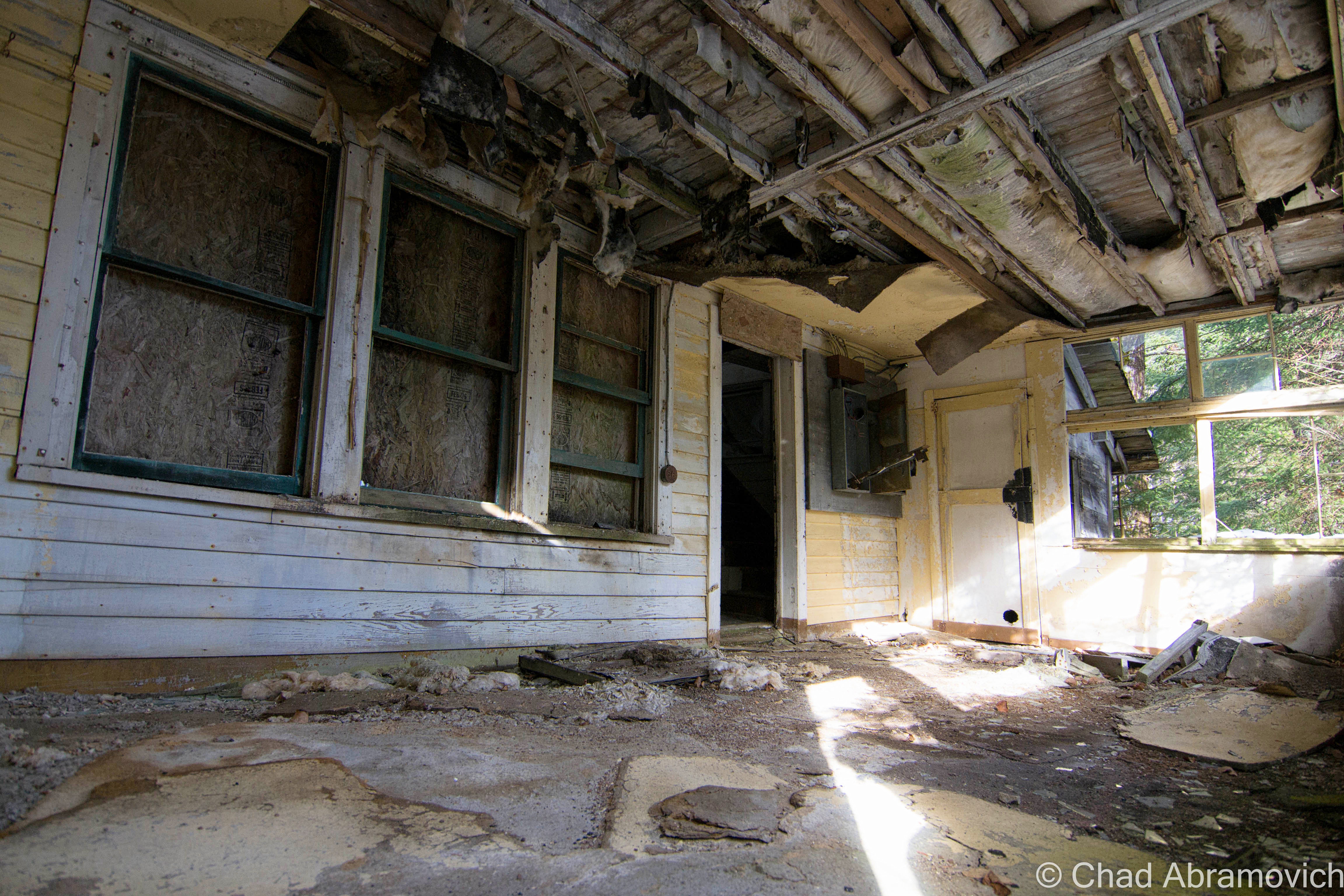

































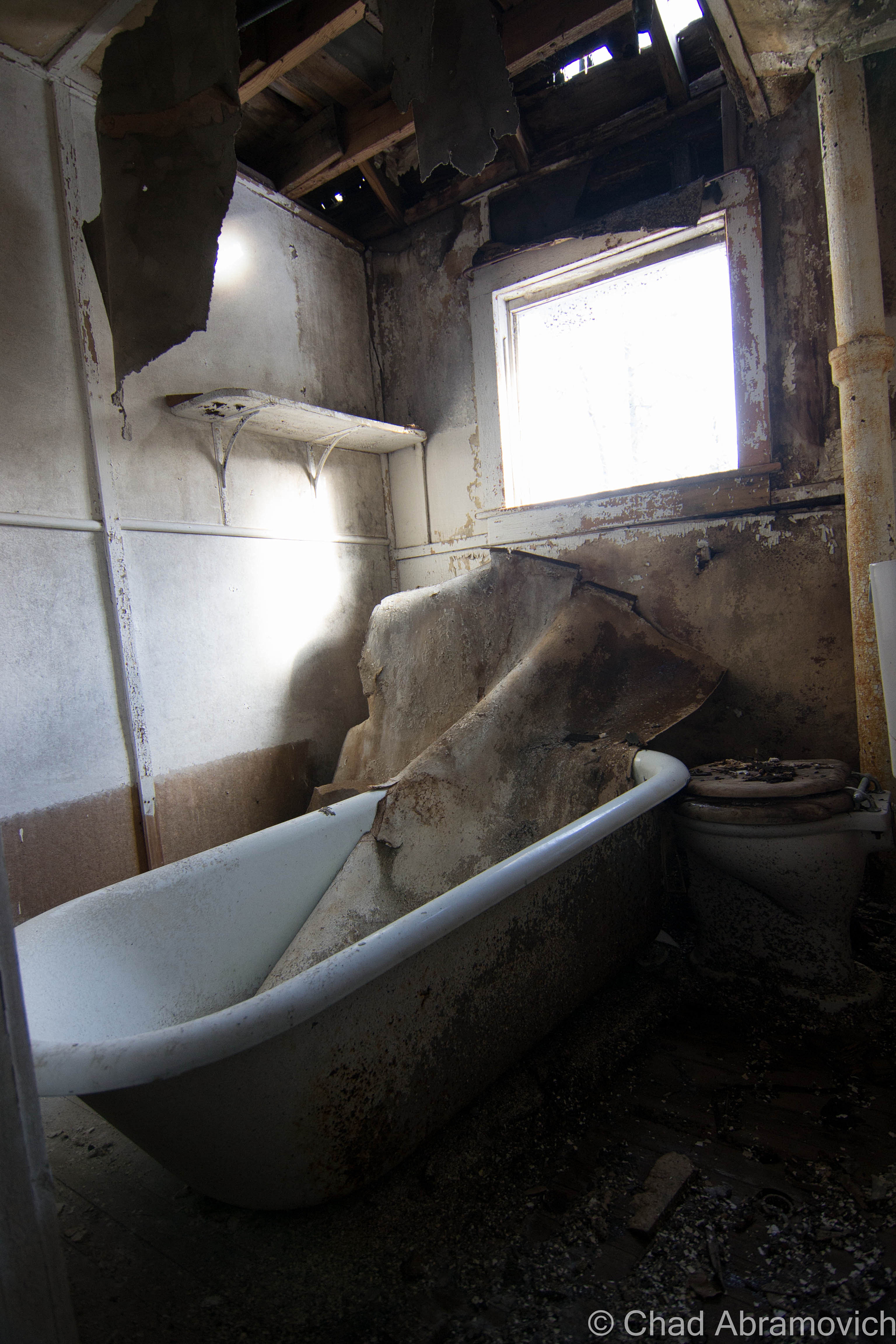
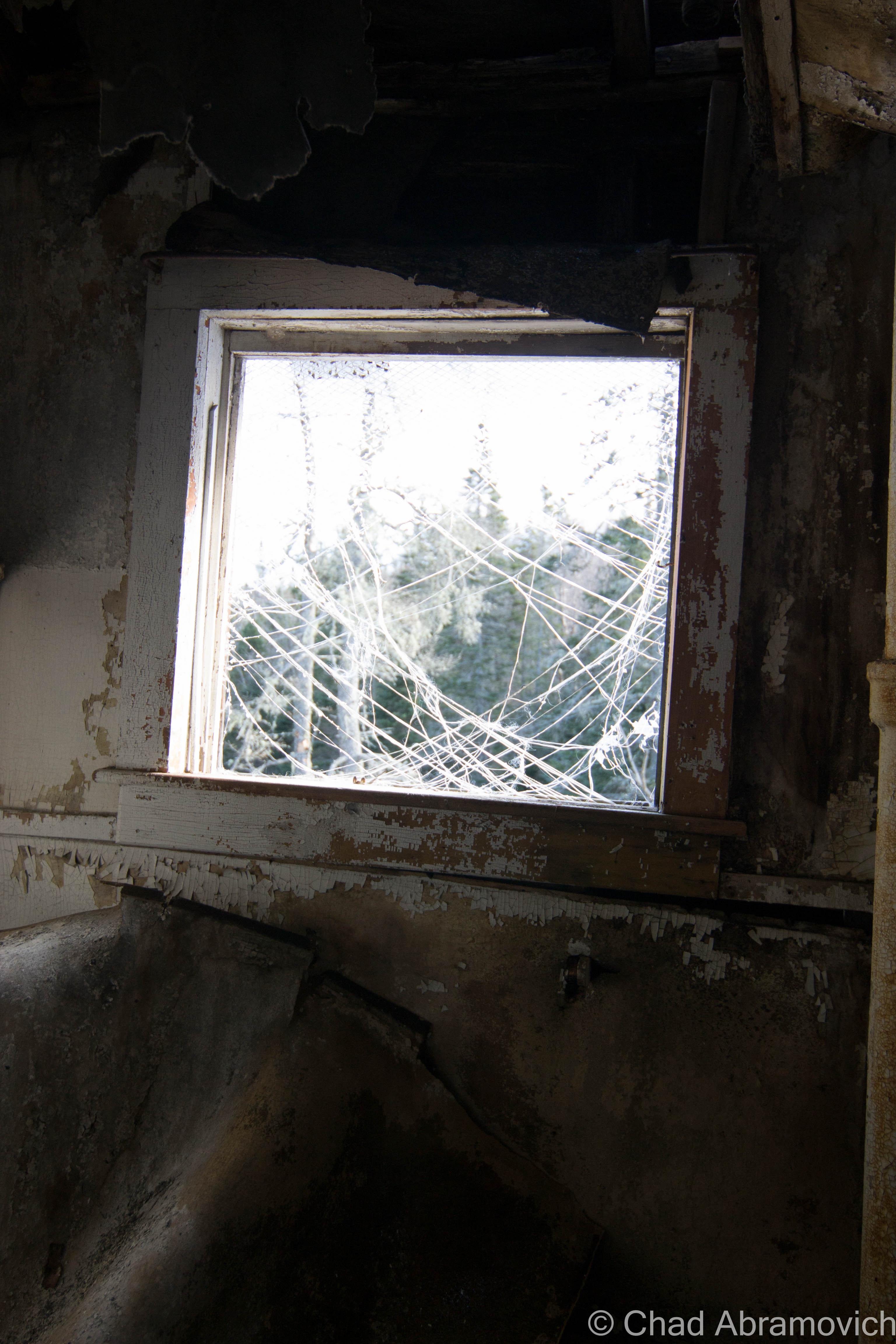



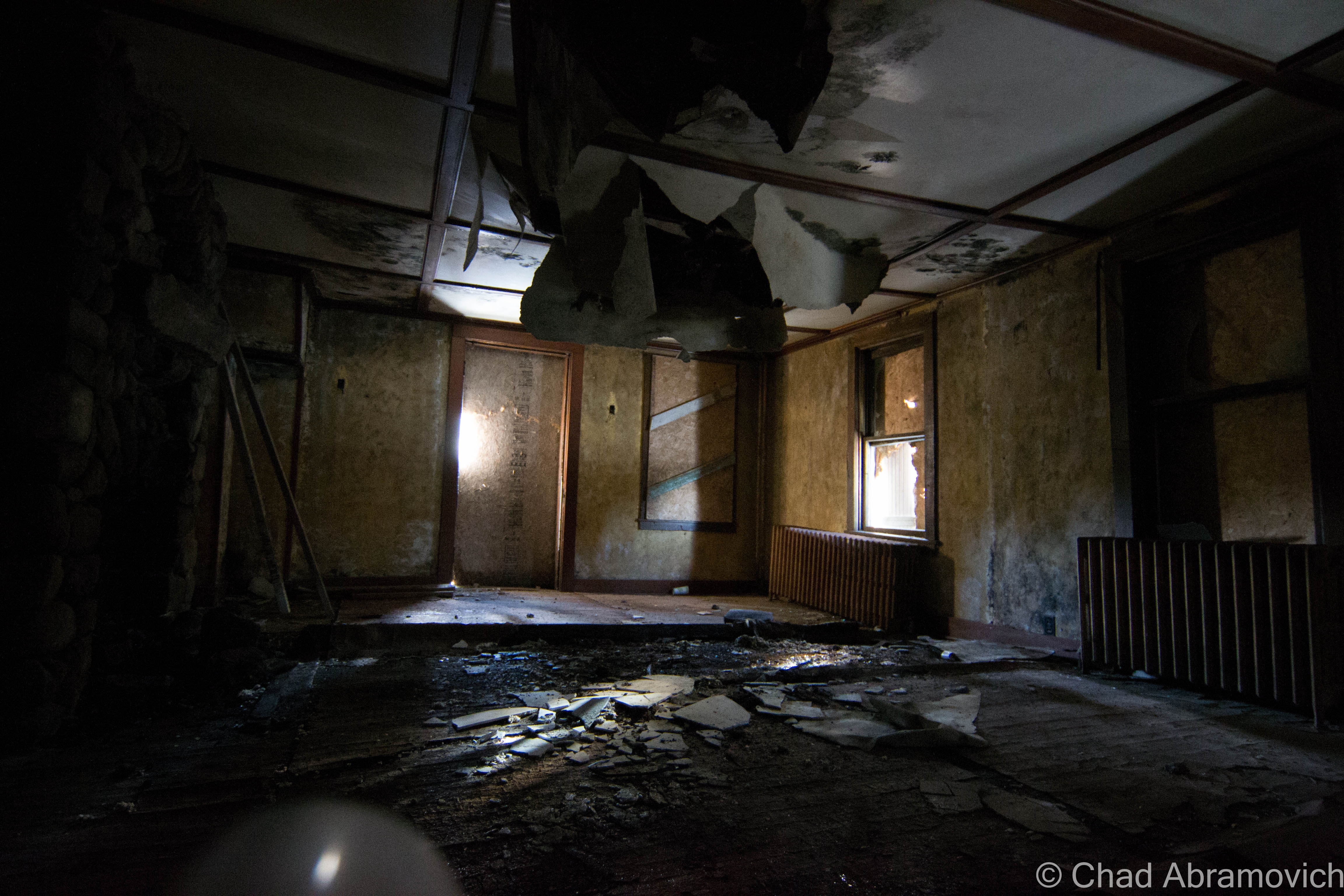



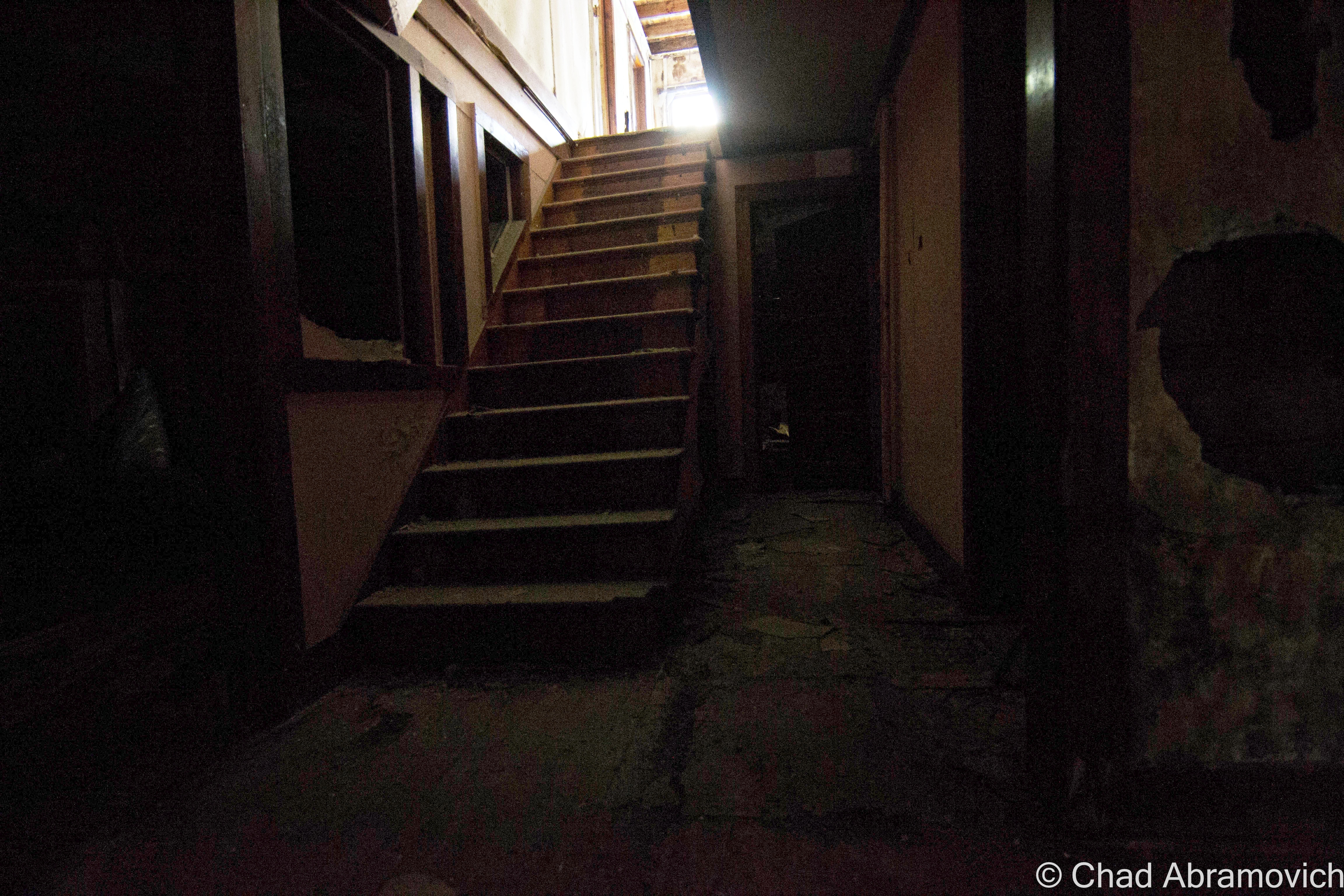












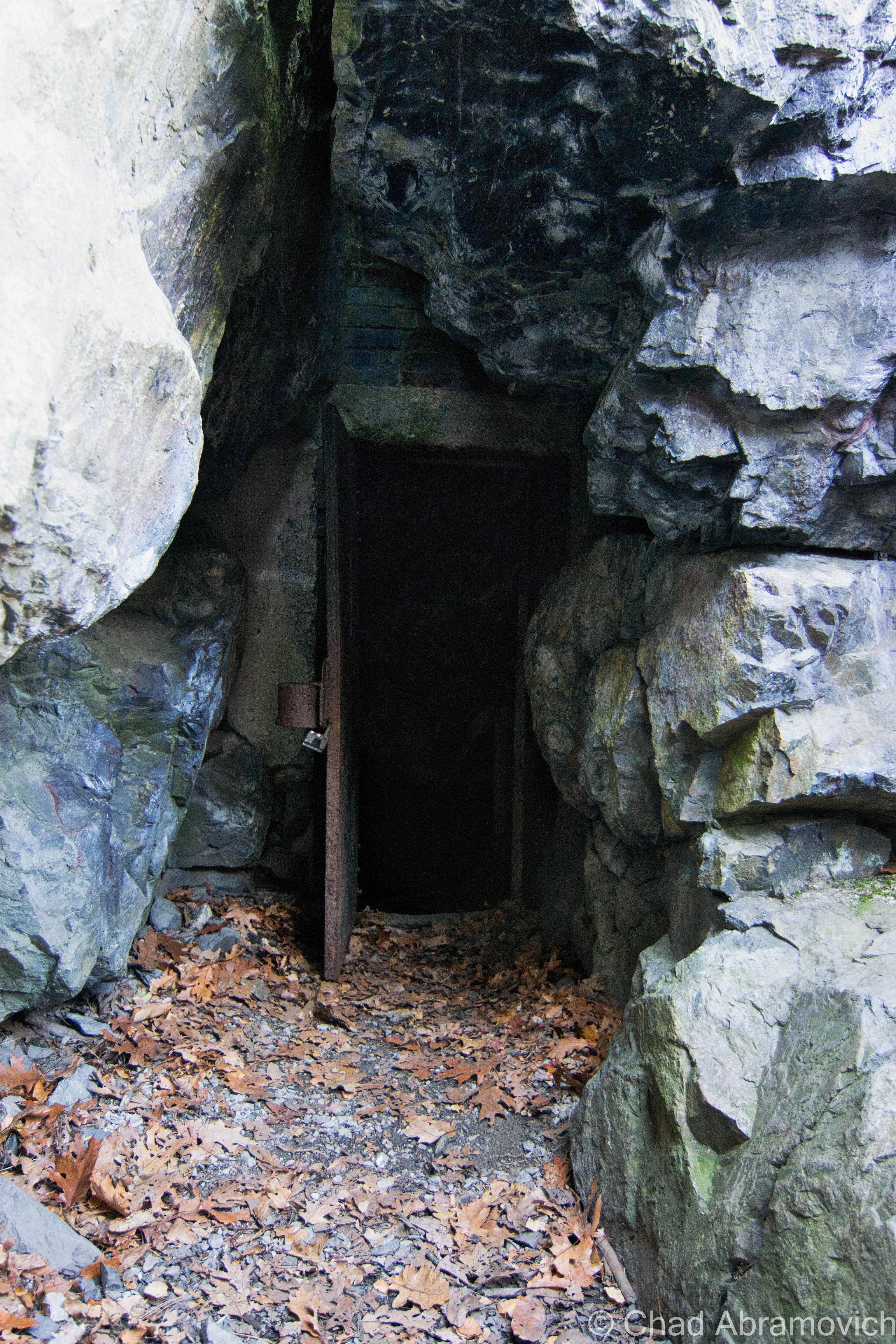







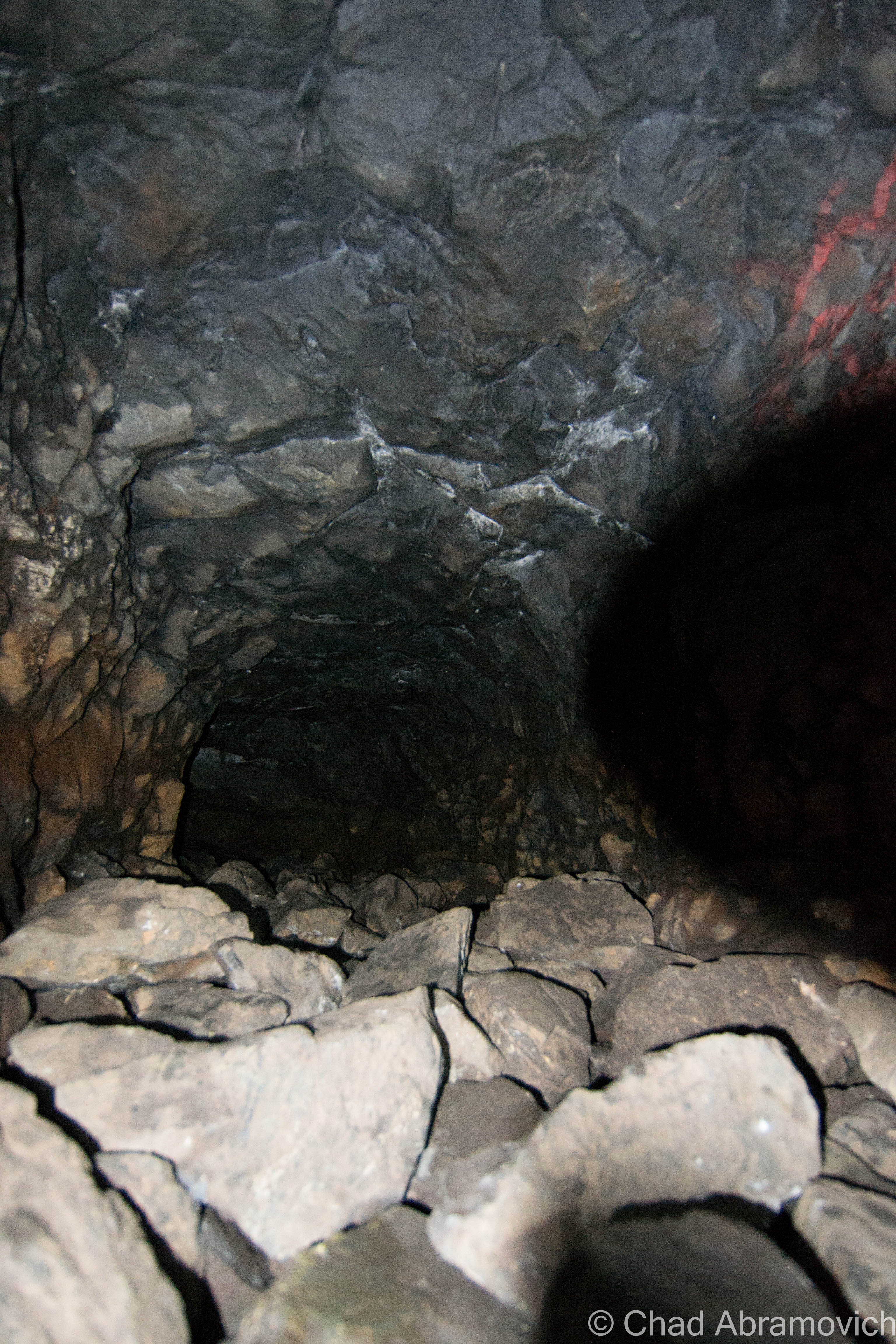


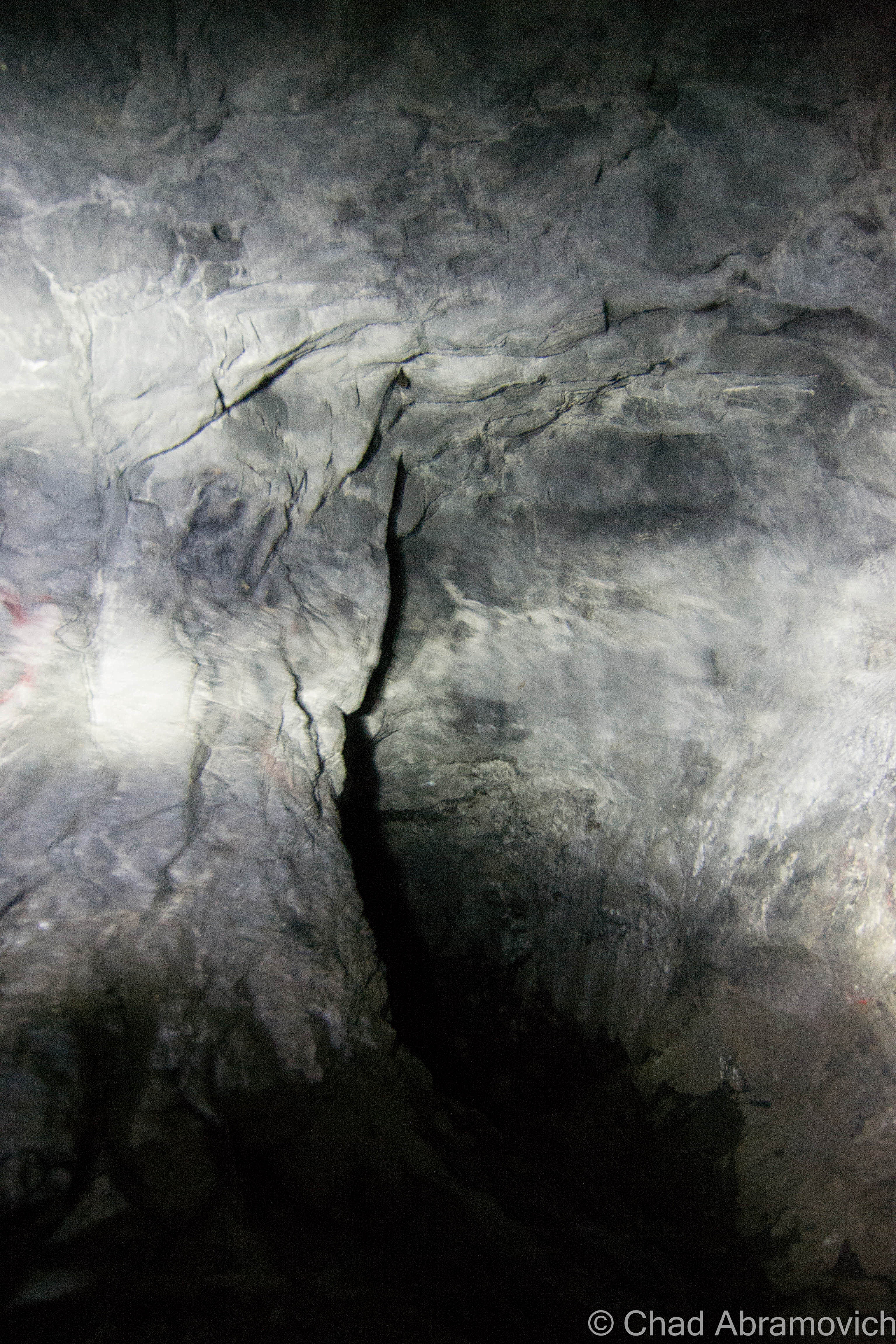
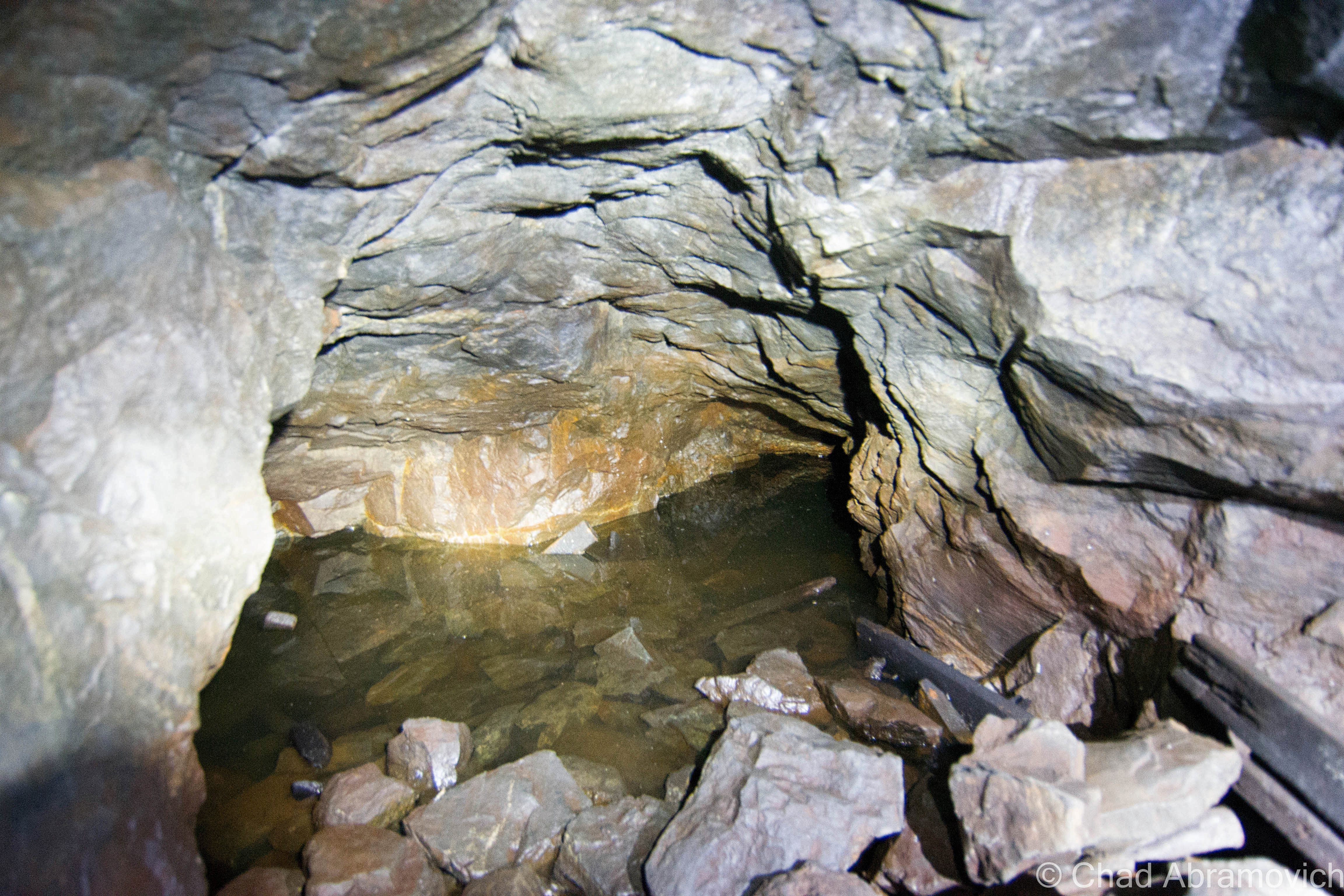



,_Sheldon,_Vt,_from_Robert_N._Dennis_collection_of_stereoscopic_views.jpg)
_2.jpg)










